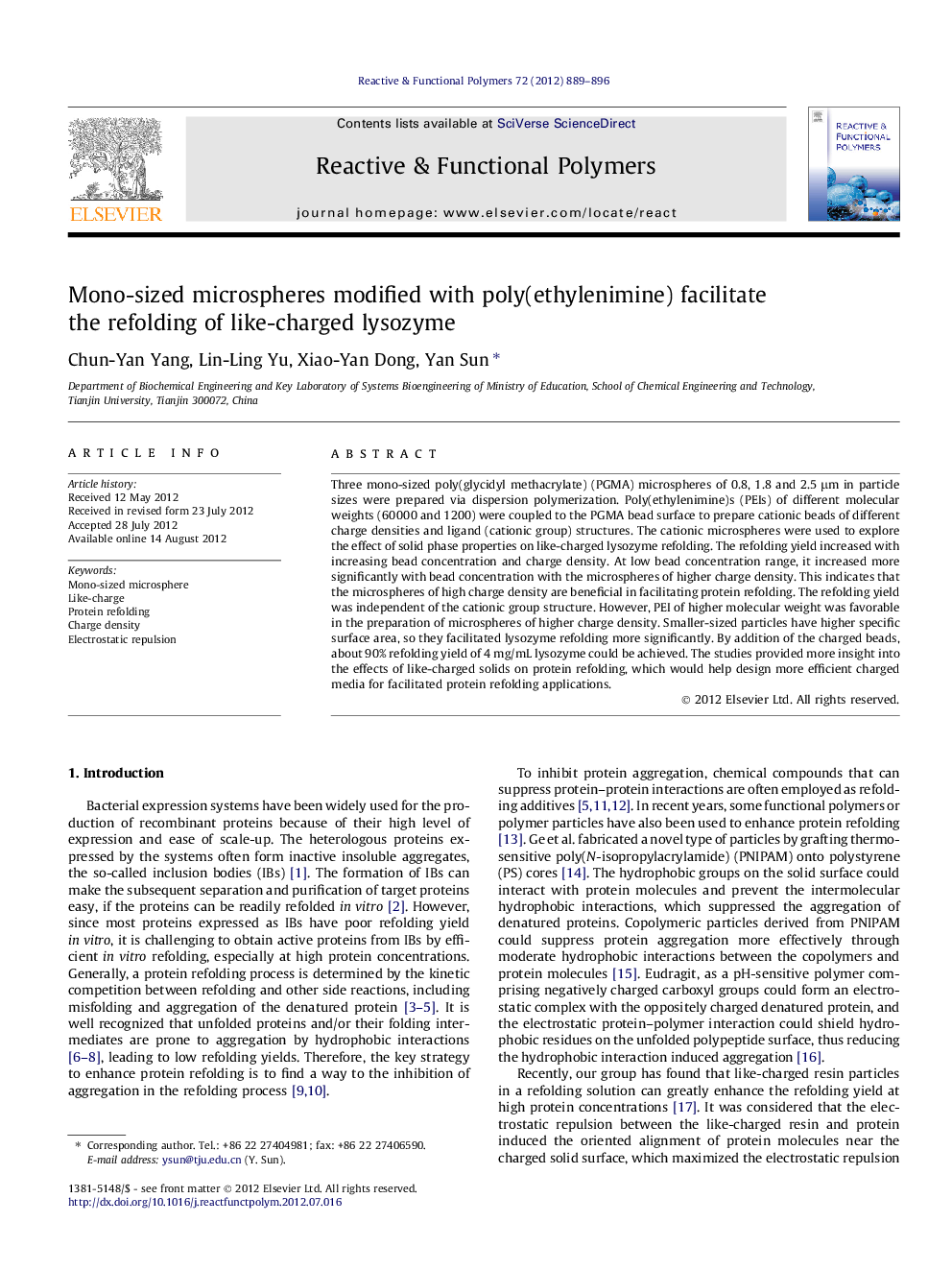| Article ID | Journal | Published Year | Pages | File Type |
|---|---|---|---|---|
| 5210208 | Reactive and Functional Polymers | 2012 | 8 Pages |
Three mono-sized poly(glycidyl methacrylate) (PGMA) microspheres of 0.8, 1.8 and 2.5 μm in particle sizes were prepared via dispersion polymerization. Poly(ethylenimine)s (PEIs) of different molecular weights (60 000 and 1200) were coupled to the PGMA bead surface to prepare cationic beads of different charge densities and ligand (cationic group) structures. The cationic microspheres were used to explore the effect of solid phase properties on like-charged lysozyme refolding. The refolding yield increased with increasing bead concentration and charge density. At low bead concentration range, it increased more significantly with bead concentration with the microspheres of higher charge density. This indicates that the microspheres of high charge density are beneficial in facilitating protein refolding. The refolding yield was independent of the cationic group structure. However, PEI of higher molecular weight was favorable in the preparation of microspheres of higher charge density. Smaller-sized particles have higher specific surface area, so they facilitated lysozyme refolding more significantly. By addition of the charged beads, about 90% refolding yield of 4 mg/mL lysozyme could be achieved. The studies provided more insight into the effects of like-charged solids on protein refolding, which would help design more efficient charged media for facilitated protein refolding applications.
